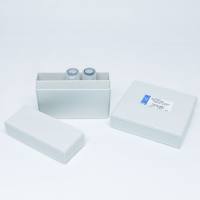Optical Approaches to Studying the Basal Ganglia
互联网
互联网
相关产品推荐

STMN2抗体STMN2兔多抗抗体Superiorcervical ganglia neural specific 10 antibody抗体STMN2 Antibody, Biotin conjugated抗体
¥880

商业青铜标准光辐射和X射线光谱分析;Commercial Bronze Standard for Optical Emission and X-ray Spectroscopic Analysis
¥650

GTF2H5/GTF2H5蛋白Recombinant Human General transcription factor IIH subunit 5 (GTF2H5)重组蛋白General transcription factor IIH polypeptide 5TFB5 orthologTFIIH basal transcription factor complex TTD-A subunit蛋白
¥1344

STMN2抗体STMN2兔多抗抗体Superiorcervical ganglia neural specific 10 antibody抗体STMN2 Antibody, FITC conjugated抗体
¥880

STMN2抗体STMN2兔多抗抗体Superiorcervical ganglia neural specific 10 antibody抗体STMN2 Antibody, HRP conjugated抗体
¥880

